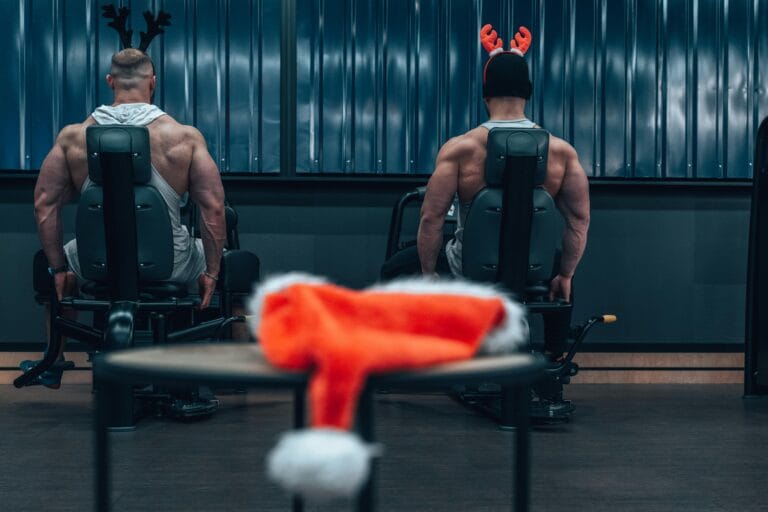FREE SHIPPING OVER $50
He’s 63, Ripped, and Defying Aging. What He Told Me About Muscle Blew My Mind—You Need to Hear This

The first time I saw him at the gym, I assumed he was in his late 40s. He was moving with a quiet confidence, his posture was perfect, and the veins on his arms were a testament to a long-standing commitment to fitness. His movements were smooth, and he was lifting weights that would challenge someone half his age. When I found out he was 63, I was floored. He was a living contradiction to everything I thought I knew about aging and the inevitability of muscle loss.
We struck up a conversation, and what he told me next changed my entire perspective on fitness. I thought the secret to his success was a new supplement, an exotic diet, or some complex training program. He just smiled, wiped his brow, and told me a simple, profound truth. He told me that aging doesn’t cause muscle loss; it just reveals whether or not you’ve been doing the one thing that matters most. The conversation that followed blew my mind, and I knew instantly that I had to share his wisdom.
The Aging Myth: What We’ve All Been Told
We’ve been conditioned to believe that losing muscle mass and strength is a normal, unavoidable part of getting older. We call it sarcopenia, a scientific term for the gradual decline of skeletal muscle tissue beginning around age 30. It’s often presented as an inevitable consequence of aging, much like wrinkles or gray hair.
- The Reality of Sarcopenia: While the rate of sarcopenia accelerates with age, the idea that it is an unstoppable force is a myth. The biggest driver of muscle loss is not a person’s age, but their inactivity. The saying, “use it or lose it,” is more accurate than we know.
- The Consequences: The result of sarcopenia is more than just a loss of strength. It can lead to a slower metabolism, making it easier to gain fat, and an increased risk of falls and frailty, which can severely impact a person’s quality of life.
The 63-year-old man in the gym was living proof that the aging narrative we accept is completely wrong.
The Unexpected Truth About Muscle and Aging
His secret wasn’t a secret at all. It was a simple, fundamental truth that has been validated by science time and time again. It wasn’t a special tool or a magic pill. He simply followed two core principles that most people either ignore or get wrong. He called it “the Rule of 3” for building muscle and strength at any age.
The Two Pillars of Longevity: The Secret Revealed
He broke down his philosophy into two simple pillars. He told me, “You can’t build a strong house without a blueprint and a supply of bricks. It’s the same with your body.”
Pillar #1: Progressive Overload—The Only Rule
He said, “I don’t just lift weights; I lift more weights.” This was the core of his philosophy. Progressive overload is the single most important principle of muscle building. It’s the act of gradually increasing the stress you place on your muscle to force it to adapt and grow stronger.
- How It Works: Your body is incredibly smart. When you lift a weight, your muscles are put under stress. When you rest, your body repairs and rebuilds them slightly bigger and stronger to handle that stress better next time. The key is to consistently increase the stress.
- His Approach: He didn’t just add a ton of weight at once. He explained that a single extra rep, an extra set, or a slightly heavier weight than last time is all it takes. He kept a simple notebook to track his lifts, ensuring he was always progressing, no matter how small the increase.
- The Takeaway: The “secret” is not about a specific exercise but about the method. You can’t just go through the motions. You have to actively challenge your muscles to force them to grow.
Pillar #2: Protein—The Building Block
His second point was just as simple and just as vital. “You can’t build a house without bricks,” he said. He was talking about protein. As we get older, our bodies become less efficient at using protein for muscle building. This means that protein intake becomes even more critical than it was in our younger years.
- The Reality: While the average person needs a certain amount of protein, those who are actively trying to build or maintain muscle mass, especially over 50, need more. A common recommendation is between 1.2 to 2.0 grams of protein per kilogram of body weight.
- His Approach: He focused on making sure every meal was built around a high-quality protein source, such as lean chicken, fish, eggs, and Greek yogurt. He also used a high-quality protein supplement to ensure he was getting enough.
- The Takeaway: You can do all the strength training in the world, but if you don’t provide your body with the building blocks it needs, you won’t see results.
Applying the Principles: A Simple Action Plan
The wisdom he shared isn’t just for a 63-year-old man. These are universal principles of fitness and longevity. Here’s how you can start applying them today:
- Embrace Resistance Training: You don’t need a gym membership to start. Bodyweight exercises like squats, push-ups, and lunges are a perfect place to begin. As you get stronger, you can add dumbbells or resistance bands.
- Track Your Progress: Keep a simple journal or use a fitness app to track your workouts. Note the exercises you do, the weight you use, and the number of reps you complete. Make it a personal challenge to do just a little bit more next time.
- Fuel Your Muscles: Make sure you are consuming enough protein. Try to include a protein source in every meal. If you’re struggling to meet your needs, a protein shake can be a convenient and effective way to supplement.
- Listen to Your Body: This is key, especially as you get older. Recovery is just as important as training. Make sure you are getting adequate sleep and taking rest days to allow your muscles to rebuild.
Why This Approach Works for Everyone
What he told me wasn’t a magic solution; it was a simple, science-backed truth. The principles of progressive overload and proper protein intake are the cornerstones of muscle building at any age.
- It’s Not a Fad: This isn’t a new diet or a trendy workout. It’s a fundamental principle of human physiology that has been proven to work for decades.
- It Fights Diseases of Aging: The benefits of strength training go far beyond aesthetics. It can improve bone density, boost your metabolism, and even improve cognitive function, all of which contribute to a longer, healthier life.
Conclusion
I thought I was a student of fitness, but in a single conversation with a 63-year-old man, I was humbled by a profound truth. Aging doesn’t have to mean a decline in strength and vitality. Muscle loss is not inevitable. By consistently challenging your muscles and providing your body with the protein it needs, you can not only stop the decline but also actively rebuild and reshape your body. It’s a simple secret with a powerful promise: you can take control of your aging process and build a stronger, more vibrant body, no matter how old you are.
Related Articles
- Squats Hurting Your Knees? These 4 Fixes Changed Everything for Me
- Sore After Workouts? These 10 Cool-Down Exercises Ease Pain and Boost Flexibility Fast
- Over 60 and Fitter Than Most 30-Year-Olds—This Couple’s At-Home Routine Is Shocking Trainers
- Beginner to Fit in 30 Days—No Gym, No Excuses, Just Results
- 30 Days. 3,000 Biceps Curls. The Results Were Not What I Expected
- The Swiss Ball Leg Curl: The One Move That Builds Hamstrings and Core—Fast



